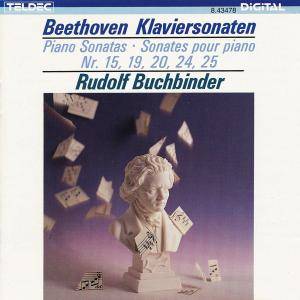 |
|
1 CD -
8.43478 ZK - (c) 1987
|
|
DIE
KLAVIERSONATEN
|
|
|
|
|
|
|
|
| Ludwig van
BEETHOVEN (1750-1827) |
Klaviersonate
(Leichte Sonate) Nr. 19 g-moll,
Op. 49 Nr. 1 (Komponiert 1795/98)
|
|
6' 09" |
|
|
-
Andante
|
3' 55" |
|
1 |
|
-
Rondo: Allegro
|
3' 14" |
|
2 |
|
Klaviersonate
(Leichte Sonate) Nr. 20 G-dur,
Op. 49 Nr. 2 (Komponiert 1795/96) |
|
8' 23" |
|
|
-
Allegro, ma non troppo
|
4' 40" |
|
3 |
|
-
Tempo di Menuetto
|
3' 43" |
|
4 |
|
Klaviersonate
Nr. 24 Fis-dur,
Op. 78 "A Thérèse" -
Der Gräfin
Therese von Brunswik gewidmet
(Komponiert 1809) |
|
7' 34" |
|
|
-
Adagio cantabile · allegro ma non
troppo
|
4' 44" |
|
5 |
|
-
Allegro vivace
|
2' 50" |
|
6 |
|
Klaviersonate
Nr. 25
(Sonatine)
G-dur,
Op. 79 (Komponiert
1809)
|
|
7' 50" |
|
|
-
Presto alla tedesca
|
3' 06" |
|
7 |
|
-
Andante
|
2' 47" |
|
8 |
|
-
Vivace |
1' 57" |
|
9 |
|
Klaviersonate
Nr. 15 D-dur,
Op. 28 "Pastorale" -
Joseph Edlen von
Sonnenfels gewidmet
(Komponiert 1801) |
|
22' 16" |
|
|
-
Allegro
|
9' 14" |
|
10 |
|
-
Andante
|
6' 25" |
|
11 |
|
-
Scherzo: Allegro vivace
|
1' 54" |
|
12 |
|
-
Rondo: Allegro ma non troppo
|
4' 43" |
|
13 |
|
|
|
|
Rudolf BUCHBINDER,
Klavier (STEINWAY-Flügel)
|
|
|
|
|
|
Luogo
e data di registrazione |
|
Teldec
Studio, Berlin (Germania) -
novembre 1981 (Nr. 24)
Kongreßsaal,
Villach (Austria) - luglio 1979
(Nr. 25)
Kongreßsaal, Villach
(Austria) - luglio 1980 (Nr. 19,
20, 15)
|
|
|
Original
Editions |
|
Telefunken
| 6.35596 FK - Vol.4 | 3
LPs | LC 0366 | durata:
55' 39" · 42' 47" · 65'
59" | (p) 1982 | ANA |
stereo | (Nr. 24)
Telefunken
| 6.35490 FK - Vol.2 | 3
LPs | LC 0366 | durata:
53' 24" · 41' 14" · 49'
53" | (p) 1981 | ANA |
stereo | (Nr. 19, 20, 15)
Telefunken
| 6.35472 FK - Vol.1 | 3
LPs | LC 0366 | durata:
46' 29" · 43' 17" · 46'
12" | (p) 1981 | ANA |
stereo |Nr. 25)
|
|
|
Edizione CD
|
|
Teldec |
8.43478 ZK | 1 CD | LC
3706 | durata: 53' 00" |
(c) 1987
| DDD/DMM | stereo
|
|
|
Executive
Producer |
|
Wolfgang
Mohr
|
|
|
Recording
Engineer |
|
Martin
Fouqué (Nr. 25); Siegbert Ernst
(Nr. 19, 20, 15); Eberhard
Sengpiel (Nr. 24)
|
|
|
Cover design
|
|
Holger
Matthies
|
|
|
Note |
|
- |
|
|
|
|
| THE 32
PIANO SONATAS (10 CDs DMM) |
Piano
Sonatas Nr. 19 and 20, Op. 49
Nr. 1 and 2
These two pieces were published in
1805 in Vienna under the title
”Deux sonates faciles pour le
pianoforte.” Beethoven's brother
Carl had already offered them
without success to German
publishers some years previously,
possibly even without the
composer's knowledge. They were
probably written in 1795 (No. 2)
and 1796/98 (No. 1}, and are in
essence sonatinas, possibly
occasional works written for
teaching purposes; with the two
Rondos of op. 51, the first of
which also dates from 1796, they
are Beethoven's technically least
demanding piano works. Indeed,
Czerny did not include them in the
canon of piano sonatas (which he,
quite properly from his point of
view, treated as consisting of 29
valid works; the subsequent
establishment of a canon of 32
sonatas being simply attributable
to the opus numbers) and described
them all bluntly as being suitable
for not particularly expert
players. It seemed an obvious move
to publish the two pieces of op.
49 together: both are in two
movements and represent the major
and minor modes of the key of G.
Joachim Kaiser has drawn attention
to some obvious allusions to
Mozart in the Sonatina in G minor,
including one to the wellknown
"Sonata facile,” K. 545. Shortly
afterwards - in 1799 - Beethoven
used the theme of the Menuet of
Sonata No. 2 for the Menuet of his
Septet op. 20.
Piano Sonata Nr. 24 Fis-dur,
Op. 78 "A Thérèse"
This sonata and the sonatina op.
79, both dating from 1809, both
very short, are in the nature of
light relief overshadowed by
greater works: the Choral Fantasia
op. 80, the Emperor Concerto, the
string quartet op. 75 and the
incidental music to ”Egmont”. Op.
78 is dedicated to Countess
Therese von Brunsvik, to whom
Beethoven was deeply attached. (He
was also a close friend of her
brother Franz, the dedicatee of
the ”Appassionata” and the
Fantasia op. 77, he may well have
had a love affair with her sister
Josephine, the widow of Count
Deym.) The short motto which
launches the sonata, four bars
with the.significant marking
”adagio cantabile", almost gives
the impression that it reflects a
romantic dedication. (The normally
notoriously matter-of-fact Hans
von Bülow once went so far as to
say that if Beethoven had composed
nothing except for these four
bars, he would still have been
immortal.) Though the motto has no
further thematic role to play in
the movement, the songlike
beginning of the first subject
sounds like a continuation of this
adagio introduction; indeed,
”cantabile” applies without a
doubt to the whole movement, which
presages the importance that this
expression mark was to assume in
the later sonatas, starting with
op. 90. The second movement, a
lively rondo based once again on
the opening bars of the first
movement, is, according to Czerny,
quite difficult because it is
sometimes awkward: full of
two-note arpeggios, rapid hand
changes in the figuration, as later
found in Tchaikowsky, and all that
in the cumbersome key of F sharp,
which is unique in Beethoven’s
piano music. Again according to
Czerny, Beethoven was proud of
this work: “People are forever on
about the sonata in C sharp minor
(the “Moonlight”, op. 27, No. 2);
I have certainly written better
than that. The sonata in F sharp
is a different thing altogether.
Piano Sonata Nr. 25 (Sonatine),
Op. 79
The Sonatina op. 79, written in
1809, is, like a piece of light
relief, over-shadowed by greater
works: the Choral Fantasia op. 80;
the Emperor Concerto; the String
Quartet op. 74; the incidental
music for ”Egmont” and the Sonata
op. 81a "Les Adieux." In a letter
to his publishers Beethoven
expressly described the work
which, incidentally, he wanted
published with its predecessor,
op. 78, as a ”Sonatine facile."
Until the relevant sketches were
discovered it was thought that
this was an early work which, like
the piano sonatas of op. 49 or the
Capriccio “The rage over the lost
penny," he had simply published
much later. Many details, however,
militate against this view, for
example the not immediately
apparent structural and thematic
linking of the three movements by
the interval of a third, which is
common to all of them. As Joachim
Kaiser puts it, ”anyone who
analyses the sonata carefully
should be able to prove without
difficulty something that no
sensible person would dispute,
namely that this work, which is
never tediously regular or
pedantically dry, obviously comes
from the hand of the mature
Beethoven.” Incidentally, Czerny
omits it from the catalogue of
sonatas, as he does both works of
op. 49; he therefore, unlike later
catalogues, acknowledges not 32
but only 29 "great sonatas, which
by themselves would suffice to
render his name immortal."
Piano Sonata Nr. 15 D-dur, Op.
28 “Pastorale”
The fourth piano sonata to appear
in 1802, after op. 26 and the two
sonatas of op. 27, was op. 28,
written in 1801. In comparison
with its three predecessors it is
doubtless a more lightweight
composition, presenting problems
neither of form nor of
interpretation. Perhaps there is
some slight connection between the
serenely restrained character of
the music and that of the
dedicatee, the nobleman Joseph von
Sonnenfels, a scholar and
statesman already in his
seventies, a respected upholder of
Enlightenment, whom Beethoven
apparently wished to honour;
nothing is known of any personal
acquaintance. The sonata acquired
its nickname quite early on in
English editions, even before the
Pastoral Symphony (1807/08): it
probably derives from the
bagpipe-like bass figure in 6/8
time which imparts a
characteristic flavour to the last
movement. (As late as 1842 Czerny
attributed the nickname
specifically to the finale: “A
cheerful pastorale, jocose and
good-natured.”) One should not,
however, allow these associations
to obscure the fact that the work
displays significant structural
relationships. The two outer
movements are linked by an
insistant drone-like D in the
bass, lasting almost 40 bars in
the first movement, and by the
virtually identical beginning of
the first subjects of both
movements. The link between the
first and third movement is
provided by a striking rhythmic
motif - both movements are in 3/4
time: two crotchets plus a
crotchet rest in the epilogue of
the first movement and the main
theme of the Scherzo, and its
inversion in the middle section of
the first movement and the Trio of
the Scherzo. The three main
thematic groupings of the first
movement are distinguished by the
clear difierences in their rhythmic
character; this is paralleled to a
certain extent by the pronounced
contrast between legato and
staccato in the various sections
of the second movement. According
to Czerny, this movement, an
andante, was for many years one of
Beethoven's favourite pieces; he
often played it just for himself.
|
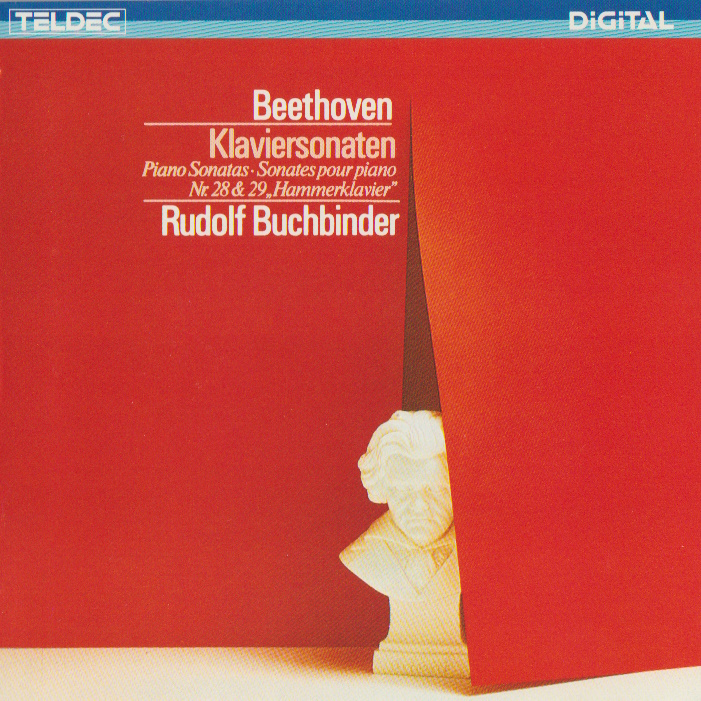
1 CD - 8.42761 ZK - (c) 1984
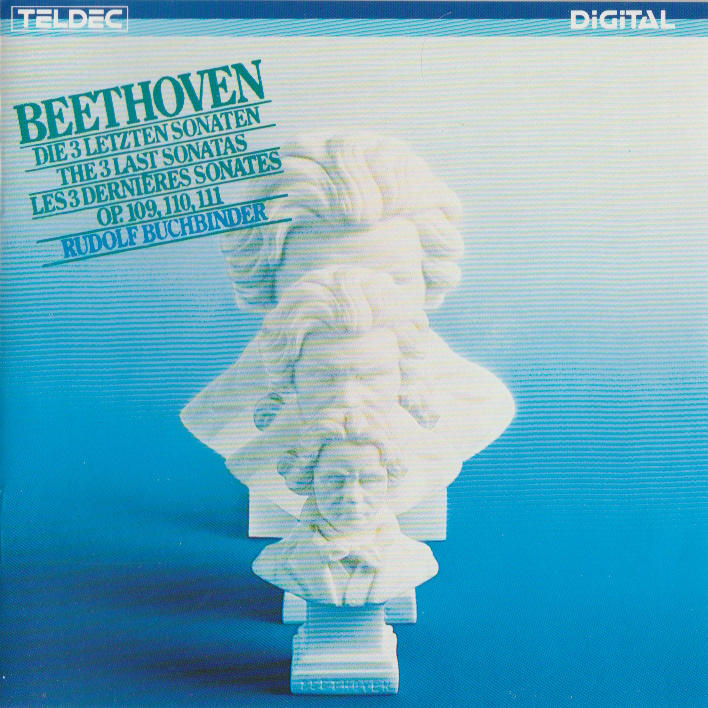 1 CD -
8.43027 ZK - (c) 1984
1 CD -
8.43027 ZK - (c) 1984
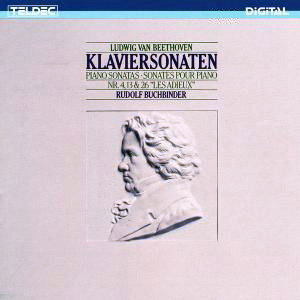
1 CD -
8.43206 ZK -
(p) 1985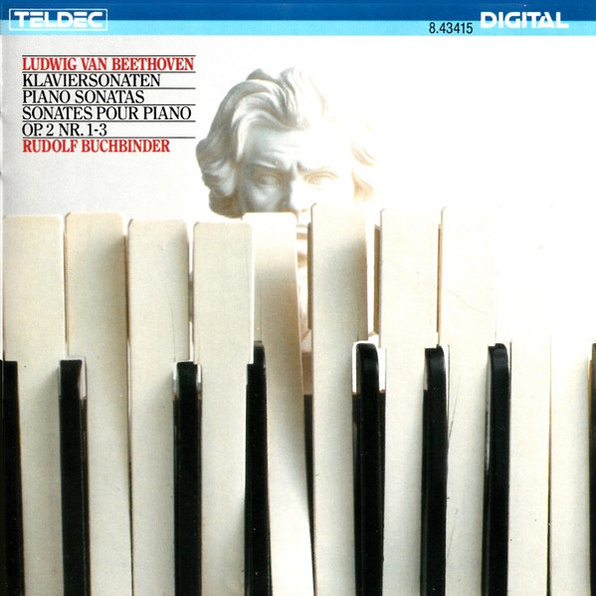
1 CD - 8.43415
ZK - (p) 1986
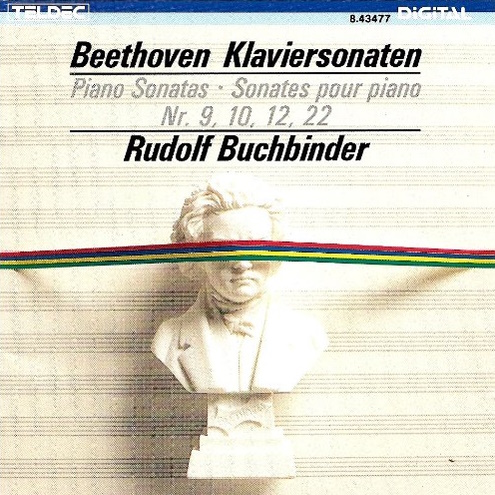
1 CD - 8.43477
ZK - (p) 1987
|
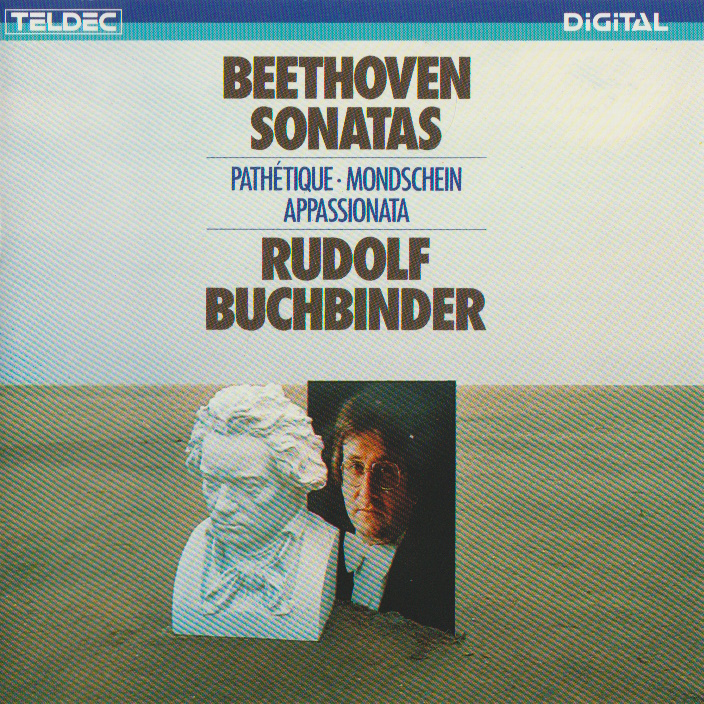
1 CD - 8.42913 ZK - (c) 1983
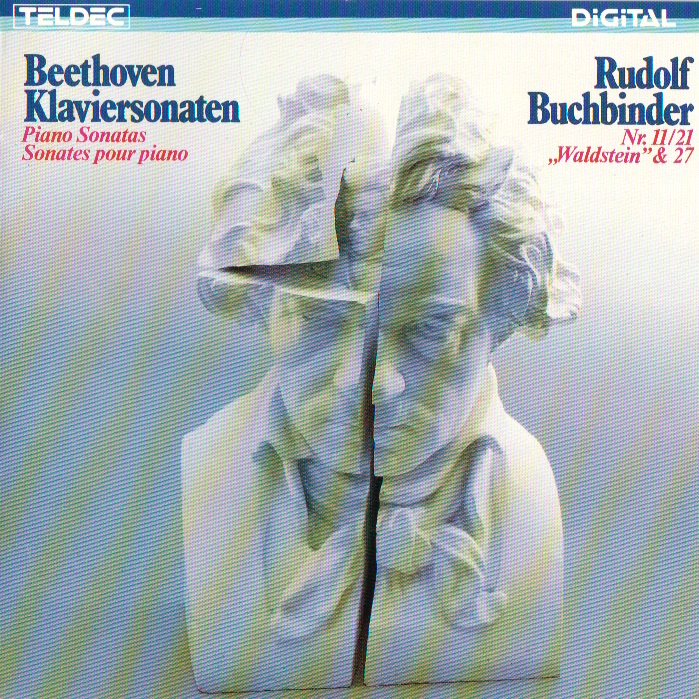
1 CD - 8.43111 ZK - (p)
1985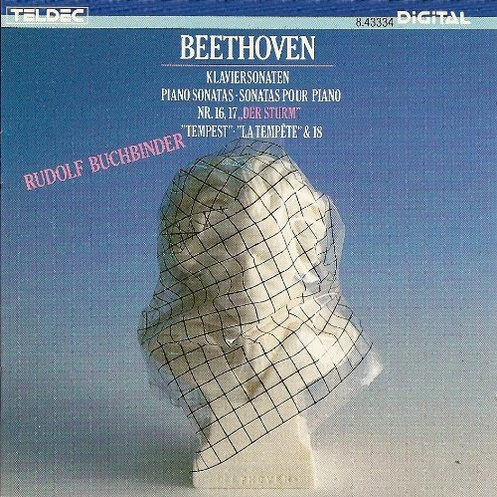
1 CD - 8.43334 ZK
- (p) 1986
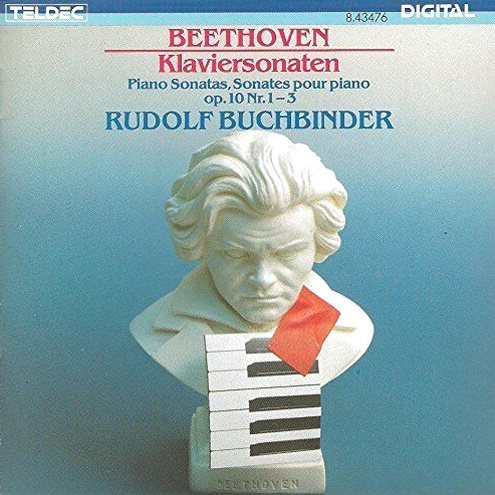
1 CD - 8.43476
ZK - (p) 1987

1 CD - 8.43478
ZK - (p) 1987
|
|
|
|
|